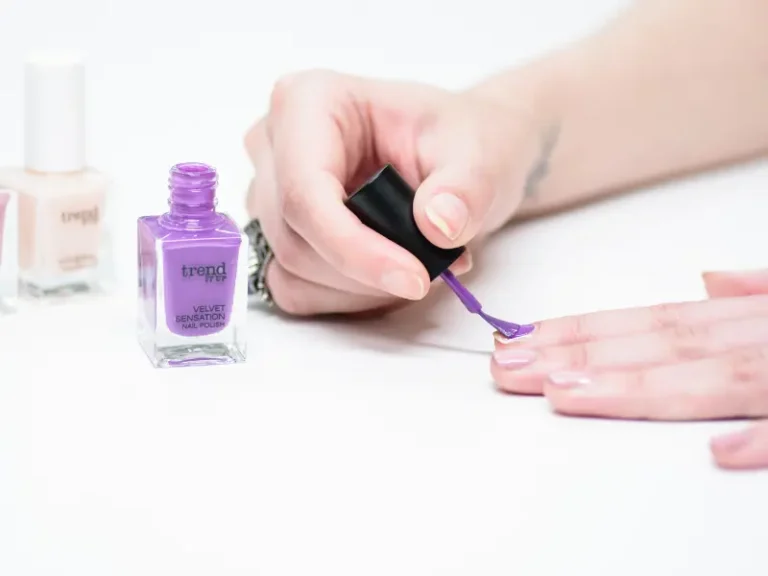Ever wondered how quick-dry nail polishes actually work? You know the feeling — you swipe on a fresh coat of polish, and within minutes, it’s dry to the touch. It almost feels like magic compared to the usual nail polish drying time, which can leave you waving your hands around for what feels like forever. But there’s no magic involved — it’s all about the science. Let’s break down exactly what makes quick-dry nail polishes work so fast and why they’ve become a total game-changer for at-home manicures.
💅 How Regular Nail Polish Dries
To understand how quick-dry polish works, it helps to know how regular nail polish dries in the first place.
Regular nail polish is made up of four key components:
- Film-forming agents – These create the solid, glossy layer on your nails.
- Pigments – These provide color and opacity.
- Plasticizers – These make the polish flexible and resistant to cracking.
- Solvents – These keep the polish in liquid form until you apply it.
When you paint your nails, the solvents start to evaporate. As they evaporate, the polish starts to harden and form a smooth film on your nails. This process can take anywhere from 10 to 20 minutes — and even longer for thicker coats. That’s why smudging is such a common problem with regular polish. The surface may feel dry, but the deeper layers are still soft and tacky.
🚀 What Makes Quick-Dry Nail Polish Different?
Quick-dry nail polishes use a clever combination of chemistry and formulation changes to speed up the drying process. Here’s what makes them dry so much faster:
1. Fast-Evaporating Solvents
The biggest difference between regular and quick-dry polish is the type of solvents used. Quick-dry formulas include solvents that evaporate more quickly, such as:
- Ethyl acetate
- Butyl acetate
- Isopropyl alcohol
Since these solvents evaporate faster, the polish dries and hardens at a much quicker rate — sometimes in as little as 60 seconds!
2. Higher Alcohol Content
Quick-dry polishes often contain a higher concentration of alcohol-based solvents. Alcohol evaporates rapidly, helping the polish set quickly. This is why some quick-dry polishes have a slightly stronger smell than regular ones — that’s the alcohol working its magic!
3. Less Plasticizer
Plasticizers are added to regular nail polish to make it more flexible and chip-resistant, but they also slow down drying time. Quick-dry formulas reduce the amount of plasticizer, which allows the polish to harden faster. The trade-off is that quick-dry polish might not last as long as regular polish — but that’s what top coats are for!
4. Silicones and Polymers
Some quick-dry polishes include silicones and special polymers that help the polish spread more evenly and dry faster. These ingredients create a smooth finish and reduce the chance of smudging or bubbling.
⏱️ Why Quick-Dry Polishes Might Chip Faster
While quick-dry nail polishes are super convenient, they do come with a small downside — they tend to chip more easily. This happens because the reduced plasticizer content makes the polish less flexible, so it’s more prone to cracking and peeling.
👉 Pro Tip: To make your quick-dry polish last longer, apply a thin base coat, two thin layers of quick-dry polish, and finish with a long-wear top coat. Also, avoid hot water and rough tasks for at least an hour after applying!
🔬 The Role of UV and Heat in Quick Drying
Some quick-dry polishes are also formulated to respond to heat or UV light. Heat causes the solvents to evaporate more quickly, which is why blowing on your nails or using a quick burst of cool air from a fan can help speed things up.
👉 Gel polishes and UV quick-dry top coats harden when exposed to UV light, which activates the curing agents in the formula. This creates a tough, glossy finish that resists chipping — but it’s not exactly the same as a standard quick-dry polish.
💡 Tips for Faster Drying (Even Without Quick-Dry Polish!)
If you’re in a rush and don’t have quick-dry polish on hand, try these tricks to speed up drying time:
✔️ Dip your nails in cold water – After applying polish, let it sit for a minute, then dip your nails in a bowl of cold water for 2-3 minutes. The cold helps harden the polish faster.
✔️ Use a fast-dry top coat – These are designed to help polish dry faster and add a protective layer to reduce chipping.
✔️ Thin coats are better – Applying multiple thin coats dries faster than one thick coat.
✔️ Use a hairdryer on cool setting – A blast of cool air can help speed up evaporation.
🌟 The Bottom Line
Quick-dry nail polishes are all about faster evaporation and streamlined formulas. By using fast-evaporating solvents, reduced plasticizers, and smooth-spreading agents like silicones, they dry quickly without sacrificing shine and color payoff. While they might not last as long as regular polish, the convenience of being able to touch your nails within minutes makes them a must-have for any nail lover.
Next time you’re in a rush but still want a flawless manicure, reach for that quick-dry bottle — now you know the science behind the magic!
👉 Have you tried quick-dry nail polishes? Let us know your go-to brands and tips in the comments! 👇



